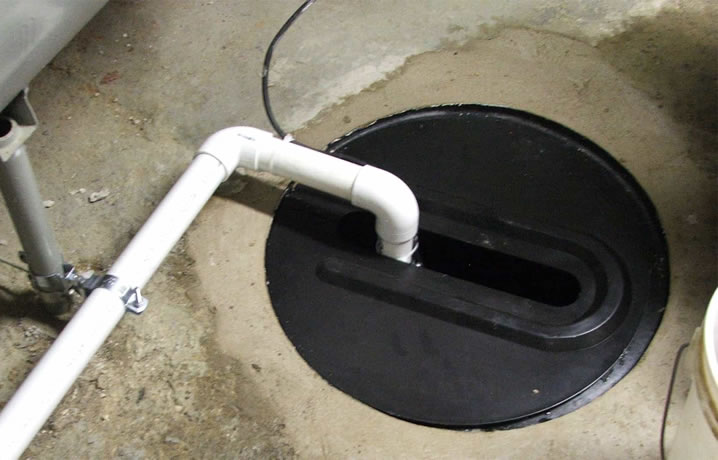What're your thoughts and feelings about How To Effectively Clean A Sump Pump?

Sump pumps are important elements in numerous homes, particularly in locations vulnerable to flooding or too much moisture. They assist protect against water damages by successfully removing excess water from basements or crawl spaces. Nonetheless, like any other device, sump pumps require regular maintenance to ensure they work properly when needed the most. Cleaning your sump pump is a vital part of its maintenance, and understanding just how to do it appropriately can save you from costly repair work and potential disasters.
Intro
Preserving a clean sump pump is important for its appropriate functioning and long life. Overlooking this necessary task can lead to clogs, malfunctions, and inevitably, water damage to your residential property. Therefore, learning exactly how to clean a sump pump is essential for property owners who count on these gadgets to keep their cellars dry and secured.
Comprehending the Sump Pump
Before diving right into the cleansing process, it's important to have a fundamental understanding of how a sump pump works. Usually mounted in a pit or container below the basement flooring, a sump pump consists of numerous key parts, consisting of a pump, a float switch, and a discharge pipeline. When water gathers in the pit, the float switch triggers the pump, which after that pumps the water out with the discharge pipe, away from the building's foundation.
Indications of a Dirty Sump Pump
Knowing when your sump pump requires cleaning is vital for protecting against possible malfunctions. Some typical indications that show a filthy sump pump include odd noises throughout operation, lowered water circulation, and noticeable debris in the pit. If you observe any of these signs, it's necessary to clean your sump pump immediately to stay clear of any type of further problems.
Getting ready for Cleansing
Before you start cleansing your sump pump, it's necessary to take some security preventative measures. Beginning by shutting off the power to the pump to prevent any kind of electric crashes. Furthermore, wear proper safety equipment, such as gloves and goggles, to safeguard on your own from dust, debris, and potential virus.
Detailed Guide to Cleaning a Sump Pump
Turning off the Power
Begin by disconnecting the power supply to the sump pump to avoid any kind of crashes while cleansing.
Eliminating Debris and Dust
Make use of a bucket or an inside story to get rid of any noticeable debris, dirt, or debris from the sump pit. Dispose of the particles effectively to stop it from blocking the pump or the discharge pipe.
Cleaning the Pump and Float Change
As soon as the pit is free from debris, very carefully remove the pump from the pit. Evaluate the pump and the float button for any indicators of damage or wear. Utilize a soft brush or fabric to clean up the surface areas and eliminate any kind of built up grime.
Flushing the System
After cleaning the pump and float button, purge the sump pit with clean water to remove any continuing to be dust or sediment. This will certainly aid guarantee that the pump runs efficiently and successfully.
Checking for Appropriate Functioning
Before re-installing the pump, perform a quick test to make sure that the float button triggers the pump appropriately. Pour some water right into the sump pit and observe the pump's operation. If everything is functioning appropriately, you can rebuild the pump and reconnect the power supply.
Maintenance Tips to Maintain Your Sump Pump Clean
In addition to routine cleansing, there are a number of upkeep pointers you can follow to keep your sump pump in ideal problem:
Conclusion
Cleansing your sump pump is an essential facet of its upkeep and makes sure that it operates efficiently when you need it one of the most. By following the steps laid out in this overview and incorporating regular upkeep into your routine, you can expand the lifespan of your sump pump and protect your home from water damages.
How To Inspect And Clean A Sump Pump
There are a few things you may want to look for when inspecting your sump pump. These include:
Leaks: If you notice any leaks around the sump pump, it likely needs to be repaired or replaced. Mud or Water: If there is any mud or water around the sump pump, it’s likely that it’s not working properly and needs to be cleaned. Noises: If you hear any strange noises coming from the sump pump, it may be indicative of a problem. Next, you’ll need to clean the sump pump. If you notice any of these issues, it’s best to clean the sump pump as soon as possible. To do this, you’ll need to remove the pump from its housing. Be sure to have a bucket handy to catch any water that may spill out. Once the pump is removed, use a brush or a spray nozzle to clean off all of the mud and debris. You may also want to check the impeller for damage or wear and tear. If you find any damage, you’ll need to replace the pump.
Once the pump is clean, reattach it to its housing and replace any parts that were removed. Be sure to test the pump before putting everything back in place. Once everything is back in order, put the cover back on the sump pit and refill it with water.
https://elekplumbing.com/blog/how-to-inspect-and-clean-a-sump-pump/

I was made aware of that editorial about through a friend on a different domain. Are you aware of somebody else who is enthusiastic about the niche? Why not share it. We truly appreciate your readership.
Call Today